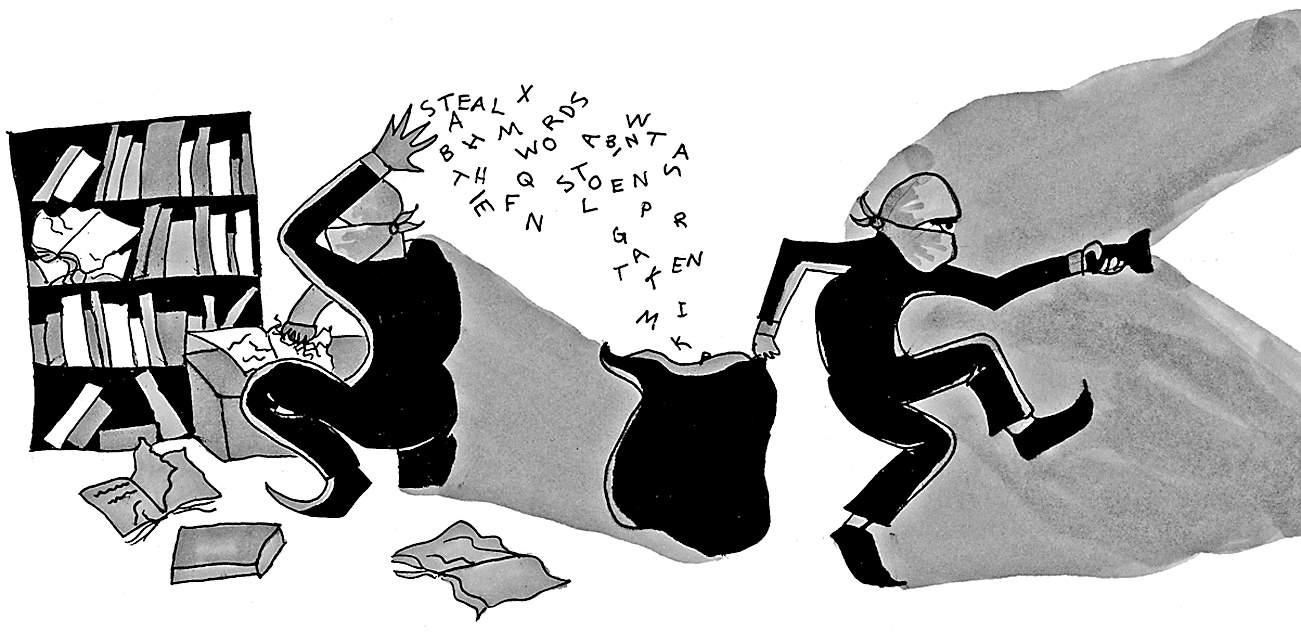Understanding Plagiarism
Plagiarism is the act of using the words or ideas of another person without attributing them to their rightful author—that is, presenting those borrowed words and ideas as if they are your own. When you plagiarize, you fail to use sources ethically or responsibly.
For many people, defining plagiarism is simple: it is not “borrowing” but stealing, and it should be dealt with severely. For others, it is a more slippery term, seen as considerably more serious if it is intentional than if it is accidental (for example, the result of careless research methods). Most colleges and universities have guidelines that define plagiarism strictly and have penalties in place for those who commit it. To avoid committing unintentional plagiarism, you need to understand exactly what it is and why it occurs. You also need to learn how to use sources responsibly and to understand what kind of information requires documentation and what kind does not.
Avoiding Unintentional Plagiarism
Even if you do not intentionally misuse the words or ideas of a source, you are still committing plagiarism if you present the work of others as your own. The most common errors that lead to unintentional plagiarism—and how to avoid them—are listed below.
| COMMON ERROR | HOW TO AVOID IT |
| No source information is provided for borrowed material (including statistics). | Always include full for borrowed material (including parenthetical statistics). documentation and a works-cited list that make the source of your information clear to readers. (See Chapter 10.) |
| A source’s ideas are presented as if they are your own original ideas. | Keep track of the sources you consult, and always keep full source information with your sources. Never cut and paste material from an electronic source directly into your paper. |
| The boundaries of borrowed material are unclear. | Be sure to use an identifying tag before and parenthetical documentation after borrowed material. (See Chapter 9.) |
| The language of paraphrases or summaries is still too close to that of the original source. | Be careful to use original phrasing and syntax when you write summaries and paraphrases. (See Chapter 9.) |
| A friend’s or tutor’s words or ideas appear in your paper. | Any help you receive should be in the form of suggestions, not additions. |
| Material you wrote for another course is used in your paper. | Always get permission from both instructors if you want to reuse work you did for another course, and be sure the material you use is substantially revised. |
To avoid unintentional plagiarism, you need to maintain control over your sources, keeping track of all the material you use so that you remember where you found each piece of information.
As you take notes, be careful to distinguish your sources’ ideas from your own. If you are copying a source’s words into your notes, put them in quotation marks. (If you are taking notes by hand, circle the quotation marks; if you are typing your notes, put the quotation marks in boldface.) If you photocopy material, write the full source information on the first page, and staple the pages together. When you download material from the Internet, be sure the URL appears on every page. Finally, never cut and paste material from a source directly into your paper.
As you draft your paper, be sure to quote your sources’ words accurately (even punctuation must be reproduced exactly as it appears in the source). Be careful not to quote out of context, and be sure that you are presenting your sources’ ideas accurately when you summarize or paraphrase. (For information on quoting, paraphrasing, and summarizing source material, see Chapter 9.)

Cartoon by Loos Diallo from Whitman Pioneer.
Knowing What to Document
Documentation is the practice of identifying borrowed material and providing the proper bibliographic information for each source. Different academic disciplines require different formats for documentation—for example, English uses MLA, and psychology uses APA. For this reason, you should be sure to check with your instructor to find out what documentation style he or she requires. (For information on MLA and APA documentation formats, see Chapter 10 and Appendix B, respectively.)
Regardless of the discipline, the following kinds of information should always be documented:
Quotations from a source
Summaries or paraphrases of a source’s original ideas
Opinions, judgments, and conclusions that are not your own
Statistics from a source
Visuals from a source
Data from charts or graphs in a source
The following kinds of information, however, do not require documentation:
Common knowledge —that is, factual information that can be found in several different sources (for example, a writer’s date of birth, a scientific fact, or the location of a famous battle)
Familiar quotations—anything from proverbs to frequently quoted lines from Shakespeare’s plays—that you expect readers will recognize
Your own original opinions, judgments, and conclusions